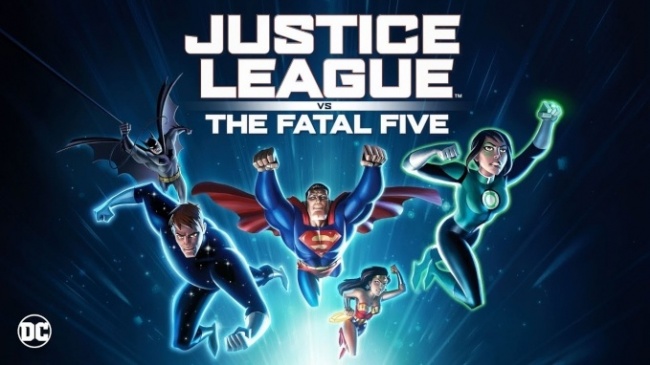Confessions of a Comic Book Guy is a weekly column by Steve Bennett of Super-Fly Comics and Games in Yellow Springs, Ohio. This week, Bennett reviews Justice League Vs. the Fatal Five and the new Wonder Comics Dial H for Hero.
It's also notable for its surprisingly sophisticated depiction of mental illness. The plot focuses on Jennifer Cruz, who has to deal with her anxiety disorder and PTSD, the result of having witnessed the murder of her friends. The scene where she relives it in a nightmare is brutal, disturbing, and one of the reasons it was given its PG-13 rating. Another is when she tells her power ring, "You don't know dick." But while Cruz sees a therapist, after being arrested for indecent exposure (there's the movie's "partial nudity"), which is a misdemeanor, although he’s not a threat to himself or others schizophrenic Legionnaire Star Boy is sent to Arkham Asylum.
In comics, animation, and games, Arkham is usually depicted as a SuperMax prison for the mentally ill, with the inmate/patients kept in solitary confinement in Silence of the Lambs-style cells with clear glass doors. But in Justice League Vs. The Fatal Five, it's run more like a conventional penitentiary so instead of being segregated to a medical unit, Star Boy is placed in the general population. This permits him to interact with violent repeat offenders like Two-Face, who has taken him under his wing. One has to assume that at some point he flipped that double-headed coin of his and it landed on the unmarked side, which compels him to commit acts of good.
I wish I could say this was wildly unrealistic but unfortunately this sort of thing is all too real. The last American asylum closed in the 1980s (something I hope DC will one day realize), but prisons and jails are sometimes called "the new asylums" because there are more mentally ill inmates than there are patients in psychiatric hospitals. I’m not suggesting Justice League Vs. The Fatal Five is a searing indictment of America’s failing mental health system. But given how often people with mental illness are demonized and stigmatized in the media (including comics where so many villains are still depicted as being criminally insane), you have to commend an honest attempt at showing that a mental health condition doesn’t have to define who you are as a person.
While I haven't found a title in the Wonder Comics line that I haven't like, I have to confess I was completely surprised by just how much I enjoyed Dial H For Hero #1. It perfectly captures all of the wish fulfillment potentials of the premise, a kid who can become an endless assortment of superheroes. And while this is definitely intended for younger readers, seeing all the superheroes Robby Reed, the original H-Dial owner, turned into on the variant cover of #1 made the heart of an ancient orphan boy swell with joy.
If I had one complaint about the new Dial H For Hero (and, honestly, I really don't), it’s that until I read Inside the Wild New Plans for DC's Dial H for Hero Relaunch, I didn't know the most exciting thing about this comic. The piece has an interview with writer Sam Humphries and artist Joe Quinones where Humphries is quoted as saying:
"And one of the angles Joe has taken with this book is that when a character on the page dials the H Dial, and when they transform, the comic itself transforms as well. The reading experience becomes transformed by the H Dial, and we’ve seen that in the first issue when Miguel turns into Monster Truck. And Joe’s art style has changed, Jordan’s coloring has changed, the lettering has changed, the caption style has changed, the narration has changed, the action has changed, the storytelling has changed… it’s like the H Dial has actually morphed the comic book that’s physically in your hands."
I’m always writing about how I’m always on the lookout for something I’ve never seen before. Well, I’ve never seen that.
The opinions expressed in this column are solely those of the writer, and do not necessarily reflect the views of the editorial staff of ICv2.com.






